
Boletus bicolor or Boletus sensibilis????

I received some information from Pavel that helps in identifying bicolor. Here is what he says:
My experience is that the non-bicolor
mushrooms which are similar to
bicolor, when they are cut in pieces, bruise blue entirely and
even color the water in which they are put (the color of course disappears
in cooking). After exposure to air, the blue color becomes pale/grayish.
On the other hand, bicolor, although it may get a few
blue spots when handling, really retains yellow color of flesh
when cut (in cooking the blue disappears and they become
entirely yellow/brown). Also, the flesh of older bicolors
becomes soft. The stalks of non-bicolors tend to be tough
(especially in old ones), which is not the case for bicolors.
Also bicolor has a special (mildly sweet) taste which non-bicolors don't
have.
I first asked an expert who is a member of Boston Mycological Club. He said that sensibilis stains instantly while bicolor takes some time. As far as I am concerned, the under part of the cap, stains instantly. No matter how fast I poke the pores, by the time I lift my finger, I see the blue mark. It is true that it continues to darken as time passes. I submitted a photo of one of these to the BMC Identification Committee and they judged it to be a bicolor.
Then I hit the books and the Internet, and got more
confused. One place stated that sensibilis is found only in South Carolina
and south. I live in Massachusetts so all should be bicolor. Then I
looked at BMC foray reports and found that sensibilis was found on some forays.
So it exists in New England.
Further search on the Internet yielded the "fact" that sensibilis does not stain
on the top of the cap and the stem while bicolor does. This again
indicates that I am getting bicolor around here.
Here is a picture I took July 31 in a park in my back yard:
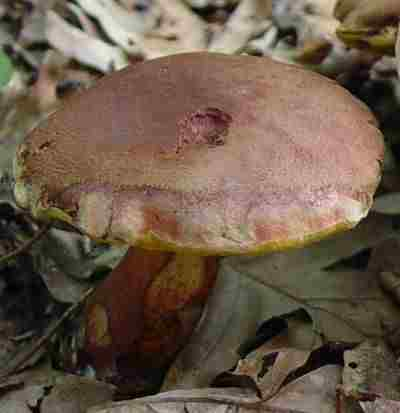
This an older specimen. A darker red on top. Pavel is not sure if
this a bicolor or not.
The underside with stains from my pokes:
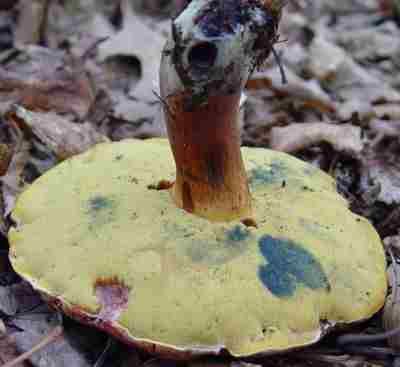
It stained rapidly so I think this not a bicolor.
Here is a pair that is not quite as old: The tops are peach colored.
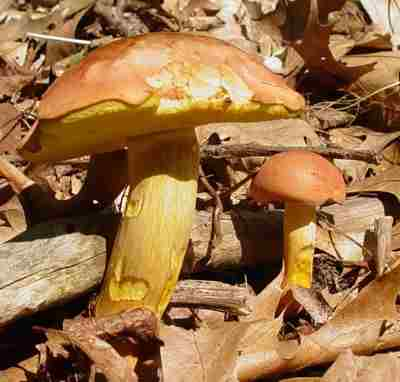
They stain at about the same rate as the first one. I have come to believe
that this too is neither a bicolor nor sensibilis.
Below is a specimen which I came to think of as sensibilis:
It has little red in the stem and has a peach colored top.
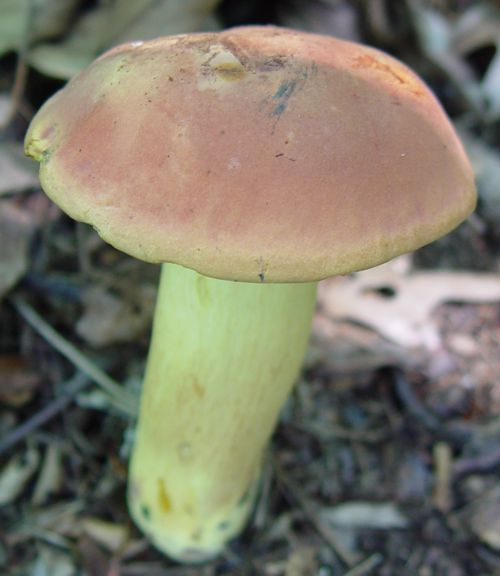
It has the typical color cap that I usually find around here. I now
believe that this also not sensibilis but another fast blue staining Bolete.
Here is one a bit older:
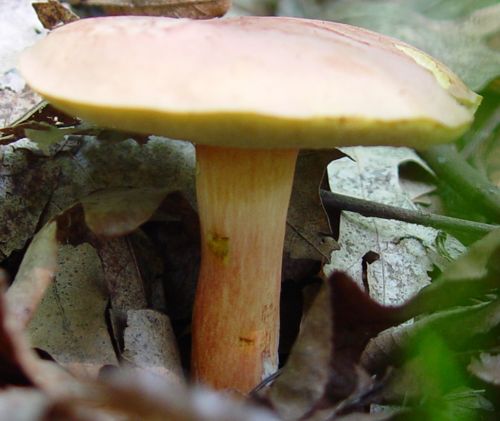
And another that grew a cap 10" in diameter:
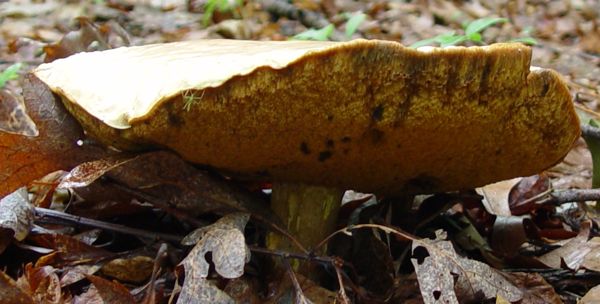
Top view shows some of that peach color left:
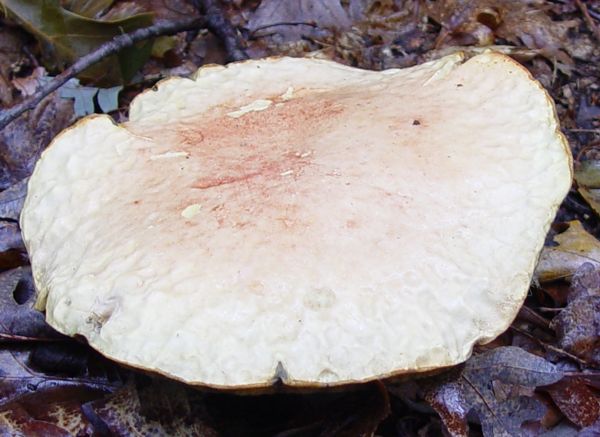
Do you know its name?
So I am still looking for an answer.
Lately I have found some specimens that DO take longer to turn color. The young specimen below did not start turning for about 5 seconds. Pavel thinks this is most likely a bicolor.
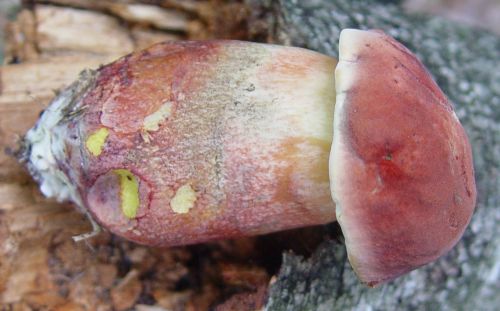
How do you tell? Let me know.
Here is where I stand as of this August 23, 2004.